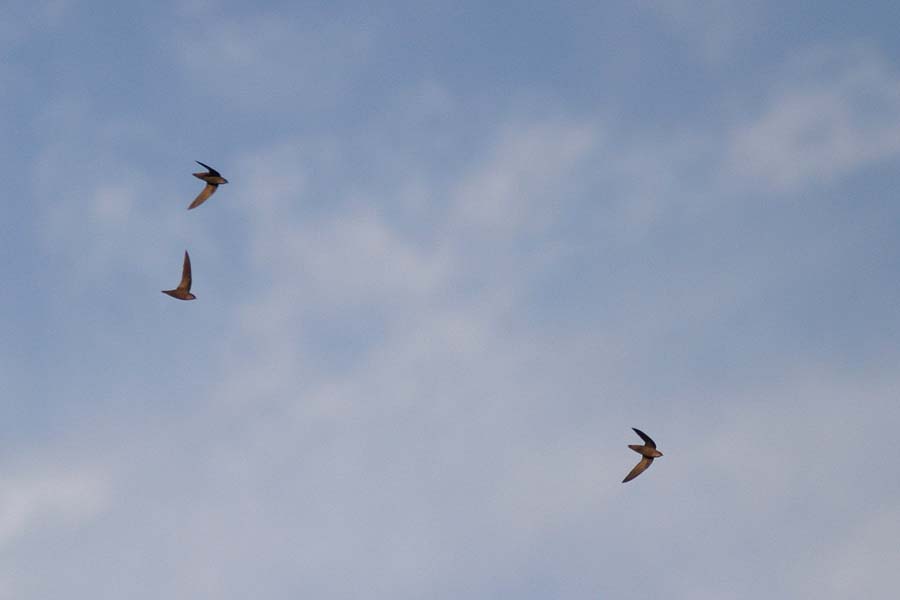CHIMNEY SWIFTS – ALWAYS A SWEET BIRD OF INTEREST
Valentine’s Day is an inflection point. We are moving along in the New Year, coming out of the dead of winter. Signs of spring are appearing despite the intense cold mid-February can bring. On sunny, calm days the rat-a-tat-tat drumming of woodpeckers is audible and on still nights, the hooting of Great Horned Owls is a welcome sound. Some swelling of buds in poplar trees is noticeable. Best of all, we all are enjoying more daylight each day. It’s time to count the days until reports of spring migrants start coming in…our swifts will be on the move in a couple of weeks and their arrival in North America will be noted on eBird.
Before we move ahead to the new 2020 swift season in Manitoba, there is some looking back to do. The St Adolphe nest site activity summary for 2019 is now posted. It was another challenging year for breeding swifts with forest fire smoke, high heat and humidity, plus intense rain events. Six nest sites were occupied by a breeding pair of swifts; three pairs successfully fledged young. As was the case in recent years, the swifts departed St Adolphe by mid-August without forming any noticeable pre-migratory groups.

Bridging the 2019 and 2020 seasons, we had some local redistributions and migrations of our Steering Committee. We have also welcomed new members to the MCSI flock. In August, Christian Artuso moved to Ottawa to join Environment and Climate Change Canada but remains on the Steering Committee as chair for the time being. Ken De Smet retired from Manitoba Agriculture and Resource Development and Tim Poole left the MCSI Coordinator job to fill that provincial Species At Risk Biologist position. We welcomed new coordinator, Amanda Shave, and Jack Dubois from Nature Manitoba to our committee. Continuing on are Frank Machovec (our all-important webmaster), Nicole Firlotte (Manitoba Agriculture and Resource Development), Lewis Cocks and Neil Butchard (master birders both), Ron Bazin (Canadian Wildlife Service) plus Rob and Barb Stewart (Sila Consultants). Fortunately, everyone involved in the shifts ‘n’ shuffles remain committed to MCSI, so our work will continue with a full roster of active people.
A lot of behind the scenes planning has taken place by the Steering Committee. The monitoring program has been developed and work on various stewardship, conservation, and research projects is moving forward. A Blue Jay article on atypical nest site structures (got to love the free-thinking birds that they are) is in press and another article about Manitoba’s first successful mitigation project (Old Grace Hospital/Assiniboine Zoo tower) is about to be submitted for review.
So, watch for news flashes. The monitoring program rollout will begin soon with a “save the dates” request. We look forward to an active 2020 season – our 14th year of monitoring Chimney Swifts in Manitoba – and the continued connection with our dedicated monitors!
–Barb Stewart
